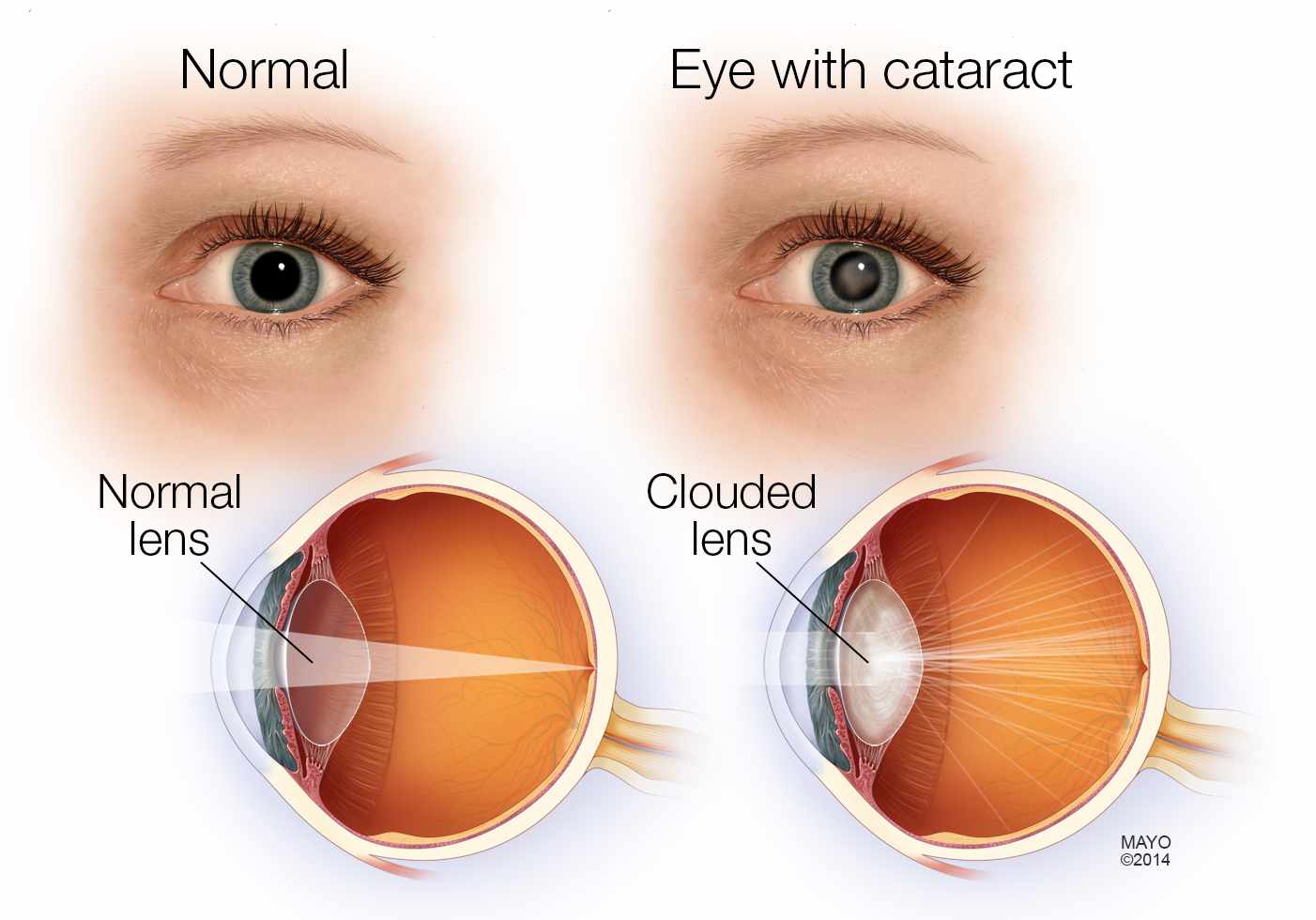Call us: 811-438-8593 |
Email us: kvehbbsr@gmail.com |
Opening Hours: MON-SAT: 9 AM - 8 PM and SUN: 9 AM - 1 PM |


A cataract is a clouding of the eye’s natural crystalline lens. The lens is responsible for focusing light and producing clear, sharp images. When we’re young the lens is clear but as we age, it begins to harden and become cloudy. The cloudy lens diminishes quality of vision.
Inside our eyes, we have a natural lens. The lens bends (refracts) light rays that come into the eye to help us see. The lens should be clear.


Aging is the most common cause. This is due to normal eye changes that happen starting around age 40.
Other reasons you may get cataracts include:
Cataract surgery is an operation to remove your eye’s lens when it is cloudy.
The purpose of your lens is to bend (refract) light rays that come into the eye to help you see. Your own lens should be clear, but with a cataract it is cloudy. Having a cataract can be like looking through a foggy or dusty car windshield. Things may look blurry, hazy or less colorful.
The only way to remove a cataract is with surgery. Your ophthalmologist will recommend removing a cataract when it keeps you from doing things you want or need to do.
During cataract surgery, your cloudy natural lens is removed and replaced with a clear artificial lens. That lens is called an intraocular lens (IOL). Your ophthalmologist will talk with you about IOLs and how they work.
